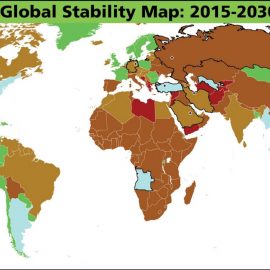This video came across my radar a week or so ago. It’s a long listen, but well worth it. Dr. Peter Zeihan goes into some of the economics and demographics of the collapse of the post-war world order. Some of these trends have gone into the background to the Maelstrom Rising series already. Zeihan’s talk has further fleshed some of them out. Now, I don’t necessarily agree with his entire forecast. I think he’s overlooking a number of, shall we say, violent variables. His outlook is almost entirely economic and demographic, leaving aside some of the potential impacts of violent ideology, desperation politics, terrorism, and “hybrid” Fourth Generation Warfare. Many of these variables have the potential to derail the economics he’s talking about. The demographics can also lead into some of these problems. As was mentioned in a discussion of this video, the solution to demographic problems has occasionally been “foreign adventures.” All of that said, the Maelstrom Rising series is predicated on the trends that Zeihan outlines. The difference is, the crisis brought about by these trends leads to desperation. And desperate governments can do things that, in the long run, are extremely destructive and stupid. Maelstrom Rising is about the
The True Legacy of the Cold War
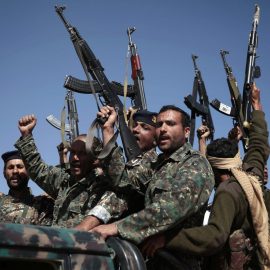
A lot of people see the Cold War as distant history. There was even one political scientist/economist who wrote a book in 1992 claiming that the end of the Cold War was “The End of History.” Obviously, that thesis didn’t age well. But even leaving aside the nonsense that with the collapse of the Soviet Union, a new age of democracy and peace had dawned, a lot of us still see a rupture between the Cold War and the present strategic situation. There is no such rupture, though. History doesn’t work in “eras” except in high school textbooks. Yes, this is in reference to my last post. An expansion, if you will. If you want to understand why we seem to be trapped in “endless war,” then you need to understand what happened since World War II, and how that has contributed to where we are now. The Cold War has been described as the multi-decade tensions between NATO and the Warsaw Pact, marked by espionage, massive conventional forces staring at each other across the Iron Curtain, and the Mutually Assured Destruction of thousands of nuclear weapons pointed in both directions. And those were part of it. But the Cold
On Endless War
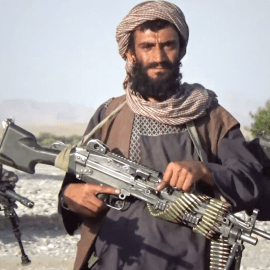
A recent headline about the failure to withdraw from Afghanistan got me thinking about the “endless war” talk that’s been going on for at least the last decade. It ties in with the “war weariness” narrative that started less than two years into the Iraq War, a war weariness felt by a population that sacrificed little or nothing. They were just tired of seeing it on the news. But there’s something there. The point just is not necessarily what the pundits think it is. “The Long War” as some have called it didn’t start on September 11th, 2001. We’d been clashing with jihadi elements for a long time before that. The Iranian Hostage Crisis began with a Shi’a jihadist revolution, that immediately targeted Americans. It has been pointed out that the US directly supported the Shah, whose Savak secret police could rival the KGB for brutality at times, thus making the US the revolutionaries’ enemy, justifiably. (It should be pointed out that most countries in the region have equally repressive police forces, including the “good” ones who are still our allies.) But the Islamic Revolution, like just about every other revolution in history, promptly proved itself every bit as bad, if
Hong Kong Crackdown
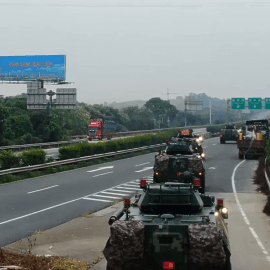
As the People’s Armed Police gather with their vehicles in Shenzen, it looks like Hong Kong’s semi-autonomy may soon be at an end. I haven’t exactly been shy about casting the Red Chinese as villains in the past. Despite the propaganda that they’ve been spreading around, and that has been often parroted by those with financial ties to Beijing, they’ve certainly earned it over the years. (Try to get any official Chinese outlet to talk about Tianamen Square sometime.) While it might be tempting, given the sheer weight of Chinese products sold to the West, to think that China has truly “embraced” the free market, the Chinese Communist Party is still firmly in charge.
The Irregular Side of Future War
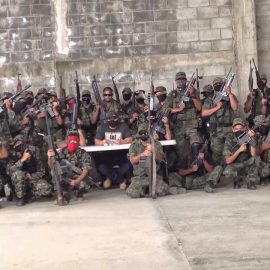
So far, the Maelstrom Rising series has mostly focused on the fact that conventional combat in future war is anything but dead. But there’s an irregular side to it, too, and the future is going to feature as much of the irregular, asymmetric side as the conventional, combined-arms side. There’s an article over on Borderland Beat about just that side of warfare, a side that is becoming increasingly prevalent in the modern world. Future conflicts will mostly be waged by drug cartels, mafia groups, gangs, and terrorists. It is time to rethink our rules of engagement. Wars are on the rebound. There are twice as many civil conflicts today, for example, as there were in 2001. And the number of nonstate armed groups participating in the bloodshed is multiplying. According to the International Committee of the Red Cross (ICRC), roughly half of today’s wars involve between three and nine opposing groups. Just over 20 percent involve more than 10 competing blocs. In a handful, including ongoing conflicts in Libya and Syria, hundreds of armed groups vie for control.
El Chapo’s Trial and Insight About War
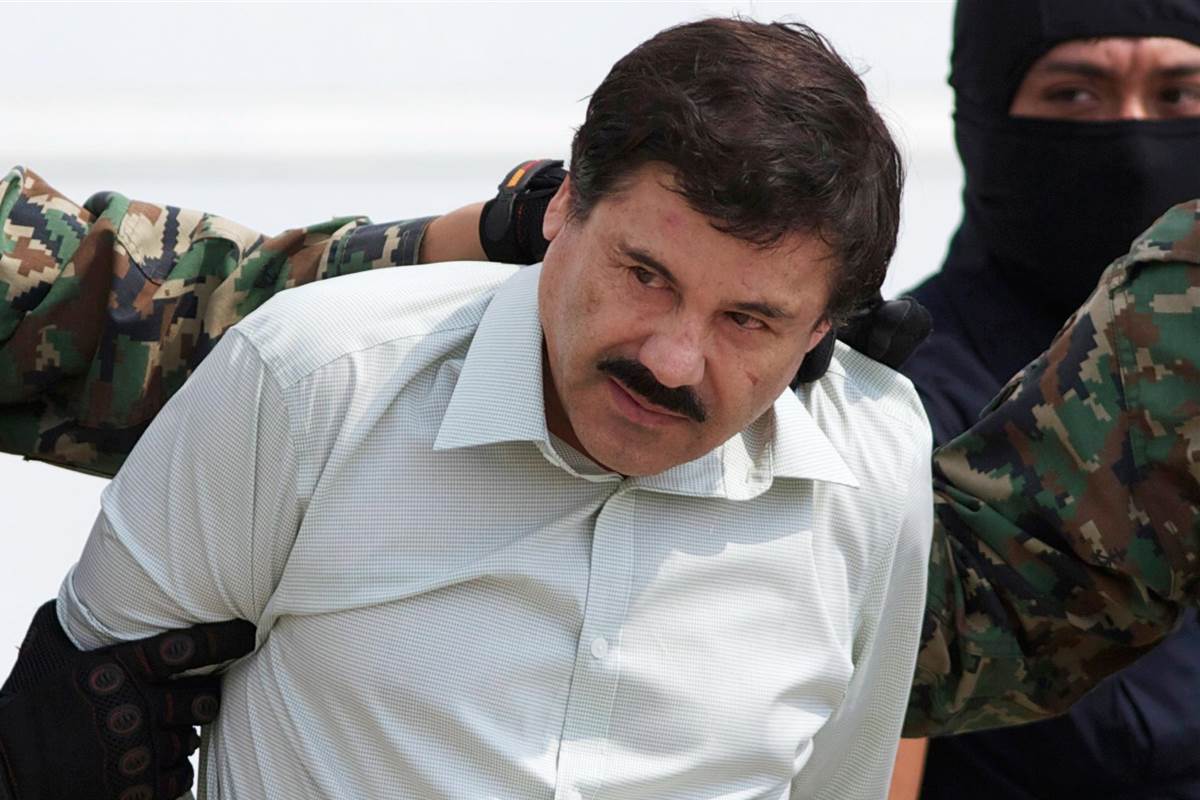
I’ve delved into Mexico a bit in my fiction. The deepest was The Devil You Don’t Know, which not only looked at the overall situation in Mexico, but also the consequences of focusing too much on High Value Targets. We seem to be obsessed with getting the “leaders,” the HVTs. (Not saying that there aren’t people working on “going up the killchain,” but culturally, our focus is always on getting the guy at the top. Whether it was the “Thunder Run” to Baghdad, that was supposed to end the war in days, in a repeat of Desert Storm, or the focus on getting Bin Laden, or al Baghdadi, or El Chapo. The idea seems to be that if you get the guy at the top, then the bad guys will collapse. Except that it doesn’t work that way. It never really has. Capturing and executing Saddam didn’t end the insurgency. Killing Bin Laden wasn’t the end of Al Qaeda. And from the trial of El Chapo, it’s evident that he really wasn’t that important to the Sinaloa Cartel, either. As of this writing, the prosecution and defense have finished their closing statements and we don’t know how it will end.
You’ve Got To Be Kidding Me

Ordinarily, I might leave this kind of thing alone. But the fact that it was published on Soldier of Fortune I find immensely disappointing. It’s gobsmacking, actually. And given that firearms and combat tactics touch on the interests of a lot of my readers, this needs a smackdown. Apparently, somebody named Kris Osborn, who is billed as a military expert, even though I can’t find any reference to him spending a day in uniform, thinks that the M17 pistol is going to revolutionize combat tactics. Yes, you read that right. Go read it. I’ll wait.
Little Bit of Research
[youtube https://www.youtube.com/watch?v=EEDU1OC_pNI] Doing research for the Brannigan’s Blackhearts series can get interesting. Since most of my experience has been in the Middle East, sometimes I’ve got to dig to figure stuff out for other regions. As I point out at one point in Frozen Conflict, much of combat tactics boil down to common sense, and therefore there are certain common factors in good tactics. But sometimes, groups and nations don’t necessarily teach good tactics. So, trying to figure out what Transnistrian Army soldiers would do when trying to clear a structure, I had to dig for some regular Russian Army footage (not the carefully tailored, backflipping hatchet attack Spetsnaz stuff; these are regular grunts). It’s still going to be an approximation, but I found a bit of urban warfare footage in the above video, mostly starting at about 2:20. It’s a doozy, too. Lets just say that we’d have had the snot bubbles thrashed out of us at Bn for the kind of fire discipline (or lack thereof) these guys show… Sucks to be a hostage…
The Second Amendment and the Mexican Drug War
Mexico isn’t really the focus of Brannigan’s Blackhearts #3 – Enemy Unidentified (certainly not like it was in The Devil You Don’t Know), but the violence, corruption, and crime that is endemic there form part of the backdrop. In addition to a scene I recently wrote, where Santelli and Tanaka are gearing up for the team’s mission in Texas, this recently caught my eye. Borderland Beat has long been a good source to find news about the ongoing narco-insurgency in Mexico and much of the government corruption and malfeasance that continues to fuel it while ignoring the plight of those Mexicans caught in the crossfire. Well, recently they published an opinion piece that repeats a number of talking points that have been used in reference to the drug war, namely that it’s all ultimately the US’ fault.
The South China Sea and Tensions With China
While Russia has taken front and center attention recently, due to the use of Russian agitprop to influence the internal affairs of Russia’s chief strategic rival (i.e., us), Russia is not the only major power that sees the US as a rival in its regional and global strategic goals. (Strangely, most of the outrage over Russia right now seems to be focused on their information and influence operations, rather than the continuing frozen conflicts in Ukraine, Transnistria, Nagorno-Kharabakh, and South Ossetia, to name only a few. But that’s another matter for another post.) China, in addition to conducting quiet resource-gathering operations worldwide, with a pronounced tendency not to care what kind of criminals they’re doing business with (see: shipping illegally mined iron ore out of the port of Lazaro-Cardenas in Mexico while that port was under control of the Caballeros Templarios cartel), has been expanding its regional military power projection, mostly focused on the South China Sea. Not only do several major shipping lanes pass through the South China Sea, making control of the waters there strategically important for reasons of power projection, but the two primary disputed island chains, the Paracels and the Spratlys, are thought to contain oil
